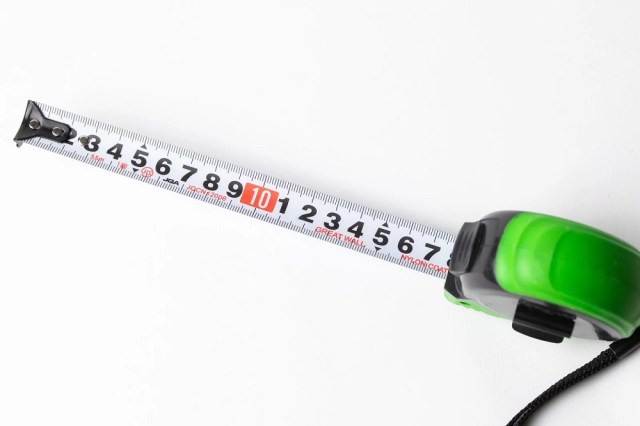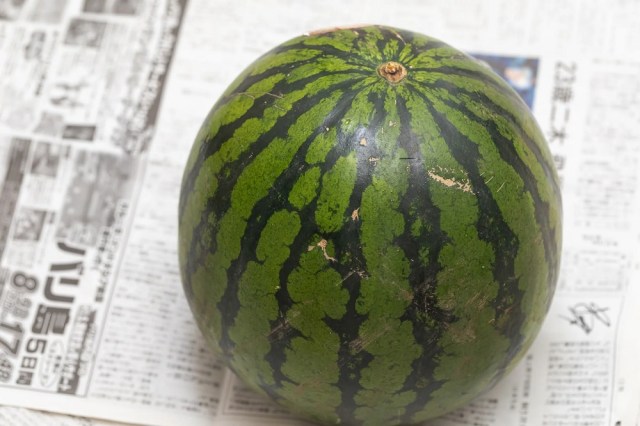When you’re dealing with measurable data, it’s a good to look not at just the current conditions, but at historical trends as well. This is especially true for important scientific and sociological issues. Are pollution levels rising or falling? Has the number of people who live below the poverty line increased or decreased?
Are Japanese women’s breasts getting larger or smaller?
As one of the country’s most popular makers of intimate apparel, Triumph International Japan is also a major font of knowledge regarding breast sizes. Two years ago, we took a look at a report compiled about the distribution of cup sizes among Japanese women, called the Lingerie White Paper (not to be confused with a white lingerie paper or, even more scandalous, white paper lingerie).
While the seven different ways to say “breasts” in Japanese we taught you then are all still widely used, spouting two-year-old statistics will get you laughed out of any scholarly discussion with the world’s eminent boob scientists. Thankfully, Triumph has just released the newest volume of the Lingerie White Paper, which provides a peek at Japan’s breasts (figuratively speaking).
Now before all of our male readers quit their jobs and apply for new ones with Triumph, we should point out that the company didn’t pick a few employees from its research department, hand them each a measuring tape, and send them out to measure the busts of each and every woman in Japan.
▼ “For science!”
The Lingerie White Paper’s announced cup sizes are based on Triumph’s bra sales, so if customers of a certain cup size are simply buying more bras on average than others, the data will be skewed accordingly. Still, if you accept the premise that women need to purchase an approximately equal number of bras regardless of their disparate amounts of mammary mass, Triumph’s data should give us a snapshot of breasts across Japan.
▼ Again, figuratively speaking. Seriously, our boss specifically told us “No sexy photos in this one!” This is honestly as far as we can go in showing you some luscious melons.
Let’s take a look at the study’s results.
A cup – 5.3 percent
Not only is this a 0.3 percent drop compared to two years ago, it’s the latest part of an even more significant change, since in 1980 almost three out of five (58.6 percent) of Triumph’s bra sales were in the smallest cup size.
B cup – 20.5 percent
Another 0.3-percent reduction compared to a year ago, and a sizeable one compared to the figure of 25.2 percent in 1980. As a matter of fact, the current combined A and B cup demographic of 25.8 percent is the smallest ever since Triumph started releasing its Lingerie White Report.
C cup – 26.3 percent
D cup – 24.1 percent
E cup – 16.2 percent
Things remained fairly steady in the middle of the boob curve…um, bell curve. Both the C and D cup figures were down (0.2 percent and 0.1 percent, respectively, compared to a year ago). The E cup number, though, was up 0.2 percent, and when you consider that these three groups as a whole accounted for less than 17 percent of Triumph’s sales in 1980, this is a huge increase.
F cup – 6 percent
Finally, not only was the 0.4 percent increase in this category the biggest change out of the six cup sizes Triumph released data for, the rise to an even six percent means that after pulling even with A cup sales in 2013, sales of the largest bras in the survey have now outpaced those of the smallest ones.
As for whether or not this trend will continue, we’ll have to wait until next year, when Triumph once again gives us a feel of what’s going on with women’s breasts in Japan (figuratively!).
Source: My Navi News via Hachima Kikou
Insert images: Pakutaso (1, 2)



 Japanese women’s breasts continue to grow, reach historic tipping point in lingerie maker’s study
Japanese women’s breasts continue to grow, reach historic tipping point in lingerie maker’s study Close Sisters Bras: The Frozen-inspired lingerie that changes color when you’re near a friend
Close Sisters Bras: The Frozen-inspired lingerie that changes color when you’re near a friend Japanese lingerie maker’s concept bra will give you pep talks, help you take perfect selfies
Japanese lingerie maker’s concept bra will give you pep talks, help you take perfect selfies Japanese men reveal their favorite women’s lingerie colors in survey
Japanese men reveal their favorite women’s lingerie colors in survey 11 things Japanese women want men to know about their breasts
11 things Japanese women want men to know about their breasts Red light district sushi restaurant in Tokyo shows us just how wrong we were about it
Red light district sushi restaurant in Tokyo shows us just how wrong we were about it Japanese ramen restaurants under pressure from new yen banknotes
Japanese ramen restaurants under pressure from new yen banknotes Tokyo Tsukiji fish market site to be redeveloped with 50,000-seat stadium, hotel, shopping center
Tokyo Tsukiji fish market site to be redeveloped with 50,000-seat stadium, hotel, shopping center McDonald’s new Happy Meals offer up cute and practical Sanrio lifestyle goods
McDonald’s new Happy Meals offer up cute and practical Sanrio lifestyle goods Starbucks Japan adds a Motto Frappuccino to the menu for a limited time
Starbucks Japan adds a Motto Frappuccino to the menu for a limited time Beautiful Red and Blue Star luxury trains set to be Japan’s new Hokkaido travel stars
Beautiful Red and Blue Star luxury trains set to be Japan’s new Hokkaido travel stars New private rooms on Tokaido Shinkansen change the way we travel from Tokyo to Kyoto
New private rooms on Tokaido Shinkansen change the way we travel from Tokyo to Kyoto French Fries Bread in Tokyo’s Shibuya becomes a hit on social media
French Fries Bread in Tokyo’s Shibuya becomes a hit on social media Pokémon Sleep camping suite and guestrooms coming to Tokyo Hyatt along with giant Snorlax burgers
Pokémon Sleep camping suite and guestrooms coming to Tokyo Hyatt along with giant Snorlax burgers Japanese company starts project to restore Nakagin Capsules to capsule hotel
Japanese company starts project to restore Nakagin Capsules to capsule hotel All-you-can-drink Starbucks and amazing views part of Tokyo’s new 170 meter-high sky lounge
All-you-can-drink Starbucks and amazing views part of Tokyo’s new 170 meter-high sky lounge More foreign tourists than ever before in history visited Japan last month
More foreign tourists than ever before in history visited Japan last month Studio Ghibli releases new action figures featuring Nausicaä of the Valley of the Wind characters
Studio Ghibli releases new action figures featuring Nausicaä of the Valley of the Wind characters Starbucks reopens at Shibuya Scramble Crossing with new look and design concept
Starbucks reopens at Shibuya Scramble Crossing with new look and design concept Studio Ghibli glasses cases let anime characters keep an eye on your spectacles
Studio Ghibli glasses cases let anime characters keep an eye on your spectacles Beautiful Ghibli sealing wax kits let you create accessories and elegant letter decorations【Pics】
Beautiful Ghibli sealing wax kits let you create accessories and elegant letter decorations【Pics】 Studio Ghibli releases Kiki’s Delivery Service chocolate cake pouches in Japan
Studio Ghibli releases Kiki’s Delivery Service chocolate cake pouches in Japan New definition of “Japanese whiskey” goes into effect to prevent fakes from fooling overseas buyers
New definition of “Japanese whiskey” goes into effect to prevent fakes from fooling overseas buyers Our Japanese reporter visits Costco in the U.S., finds super American and very Japanese things
Our Japanese reporter visits Costco in the U.S., finds super American and very Japanese things Studio Ghibli unveils Mother’s Day gift set that captures the love in My Neighbour Totoro
Studio Ghibli unveils Mother’s Day gift set that captures the love in My Neighbour Totoro New Japanese KitKat flavour stars Sanrio characters, including Hello Kitty
New Japanese KitKat flavour stars Sanrio characters, including Hello Kitty New Pokémon cakes let you eat your way through Pikachu and all the Eevee evolutions
New Pokémon cakes let you eat your way through Pikachu and all the Eevee evolutions Disney princesses get official manga makeovers for Manga Princess Cafe opening in Tokyo
Disney princesses get official manga makeovers for Manga Princess Cafe opening in Tokyo Sales of Japan’s most convenient train ticket/shopping payment cards suspended indefinitely
Sales of Japan’s most convenient train ticket/shopping payment cards suspended indefinitely Sold-out Studio Ghibli desktop humidifiers are back so Totoro can help you through the dry season
Sold-out Studio Ghibli desktop humidifiers are back so Totoro can help you through the dry season Japanese government to make first change to romanization spelling rules since the 1950s
Japanese government to make first change to romanization spelling rules since the 1950s Ghibli founders Toshio Suzuki and Hayao Miyazaki contribute to Japanese whisky Totoro label design
Ghibli founders Toshio Suzuki and Hayao Miyazaki contribute to Japanese whisky Totoro label design Doraemon found buried at sea as scene from 1993 anime becomes real life【Photos】
Doraemon found buried at sea as scene from 1993 anime becomes real life【Photos】 Tokyo’s most famous Starbucks is closed
Tokyo’s most famous Starbucks is closed One Piece characters’ nationalities revealed, but fans have mixed opinions
One Piece characters’ nationalities revealed, but fans have mixed opinions We asked a Uniqlo employee what four things we should buy and their suggestions didn’t disappoint
We asked a Uniqlo employee what four things we should buy and their suggestions didn’t disappoint Princesses, fruits, and blacksmiths: Study reveals the 30 most unusual family names in Japan
Princesses, fruits, and blacksmiths: Study reveals the 30 most unusual family names in Japan Japanese gravure idol makes jaws drop with massive M-cup chest 【Pics & Videos】
Japanese gravure idol makes jaws drop with massive M-cup chest 【Pics & Videos】 New “health care” app will measure woman’s cup size if she puts a smartphone between her breasts
New “health care” app will measure woman’s cup size if she puts a smartphone between her breasts Japanese women’s breasts get dismal satisfaction evaluation…from their owners
Japanese women’s breasts get dismal satisfaction evaluation…from their owners 10 realities of life with small breasts, according to Japanese survey
10 realities of life with small breasts, according to Japanese survey Japan’s 54-year-old lingerie model is turning heads of multiple generations in new ads 【Video】
Japan’s 54-year-old lingerie model is turning heads of multiple generations in new ads 【Video】 Ryoko Shinohara’s smouldering lingerie ad is a Triumph【Video】
Ryoko Shinohara’s smouldering lingerie ad is a Triumph【Video】 Handsome anime men help you pick out a bra, drift off to sleep in new smartphone romance game
Handsome anime men help you pick out a bra, drift off to sleep in new smartphone romance game Triumph lingerie company creates sake underwear using fabric made with Japanese rice wine
Triumph lingerie company creates sake underwear using fabric made with Japanese rice wine Just when you thought anime marketing couldn’t be any more bust-focused: character breast weights
Just when you thought anime marketing couldn’t be any more bust-focused: character breast weights Peach John x Japanese comedian Barbie collaborative project releases new line of chic bra sets
Peach John x Japanese comedian Barbie collaborative project releases new line of chic bra sets Cosplay in your underwear with anime-inspired lingerie made to order in Japan
Cosplay in your underwear with anime-inspired lingerie made to order in Japan Japanese lingerie saleswoman gives Internet a lesson in what bust sizes look like in real life
Japanese lingerie saleswoman gives Internet a lesson in what bust sizes look like in real life Bras and panties for men – Online retailer in Japan offers men the chance to feel pretty
Bras and panties for men – Online retailer in Japan offers men the chance to feel pretty Do Japanese women check out each other’s lingerie at the hot springs? Survey investigates
Do Japanese women check out each other’s lingerie at the hot springs? Survey investigates Japanese woman’s husband accidentally finds a sweet new use for her bra pads 【Photos】
Japanese woman’s husband accidentally finds a sweet new use for her bra pads 【Photos】 Government study finds only 3,065 homeless people in Japan
Government study finds only 3,065 homeless people in Japan
Leave a Reply